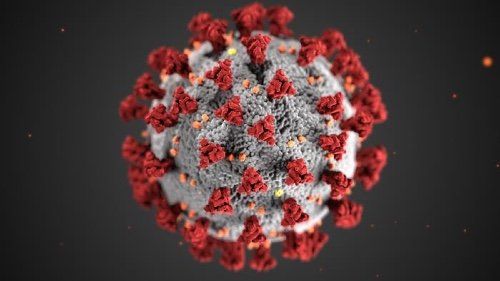X-ray as a New Frontline Tool in COVID-19 Pandemic
Radiologists in the United Kingdom are now using radiography to speed up COVID-19 identification.

As nearly every hospital and healthcare system nationwide struggles to avoid becoming overwhelmed with new and suspected cases of COVID-19, radiologists are in their own battle to provide imaging in the right circumstances while keeping scanners clean and ready.
It’s the familiar problem to radiologists around the globe now, as COVID-19 continues to spread.
“We are in unprecedented territory,” wrote Samanjit Hare, a consultant chest radiologist with the Royal Free London NHS Foundation Trust, in an opinion article published in the British Medical Journal recently.
In an effort to potentially help other providers and hospitals, he shared two main points from what he and his colleagues have learned from their experience thus far.
Make Use of Chest X-rays
Although most attention has been paid to chest CT in this burgeoning crisis, Hare explained, the chest X-ray has taken center stage as a frontline diagnostic test. Because capacity is a significant barrier in the United Kingdom, he said, any patient suspected of COVID-19 infection receives a chest X-ray, coupled with a thorough clinical history and a blood test that searches for the key COVID-19 markers, CRP and lymphopaenia.
Radiologists are being asked to prioritize these X-rays over any other imaging studies. Doing so has helped providers pinpoint which lung infections are most likely COVID-19 cases in a more timely fashion.
Prioritized Reads and CT Scanner Sterilization
Radiologists are now reading CT images while the patient is still in the scanner.
“This ‘hot CT scan’ review has become necessary to assess whether the CT scanning equipment is likely to need a prolonged deep clean in patients with features suspicious of COVID-19 infection or a shorter wipe-down,” Samanjit wrote.
Whenver possible, radiologists should wait for lab test results before deciding whether to scan a patient on the equipment reserved for patients with COVID-19 infection or one reserved for healthy patients.
Ultimately, this situation is continually evolving, and radiologists must become comfortable with being at the forefront of the crisis, Samanjit said.
“This has been a steep learning curve for frontline clinicians,” he wrote. “Such is the novel nature of this disease, decision-making by clinical radiologists is emerging as one of the key parts of frontline triage.”
GE HealthCare Debuts AI-Powered Cardiac CT Device at ACC Conference
April 1st 2025Featuring enhanced low-dose image quality with motion-free images, the Revolution Vibe CT system reportedly facilitates improved diagnostic clarity for patients with conditions ranging from in-stent restenosis to atrial fibrillation.